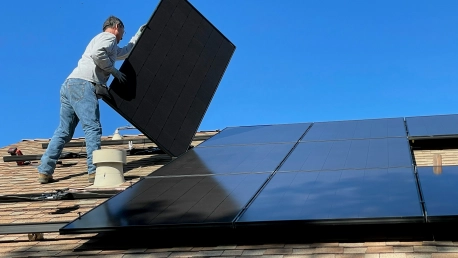The energy landscape in New England is undergoing a momentous shift toward a greener future. As the region prepares to bid farewell to its last coal-fired energy plant by 2028, Massachusetts is pivoting toward a brighter, cleaner horizon. The spotlight is shining on the vast potential of rooftop solar power, a resource that Massachusetts is tapping into with remarkable initiative. With already 10.8 percent of its rooftop solar potential utilized, the state stands as a beacon of progress, showcasing what is possible when policy, technology, and visionary planning converge.The embrace of rooftop solar ushers in an era where residents and businesses are less dependent on utility companies, leading to lower electricity costs and increased control over energy sources. This positive trend has been further catalyzed by state and federal support, including significant financial boosts from the Inflation Reduction Act. These incentives are not just empty promises; they are concrete strategies driving Massachusetts toward an affordable, sustainable energy system that could serve as a standard for others to follow.
Advocating for Streamlined Solar Integration
The Barrier of Bureaucracy
For Massachusetts to fully realize its rooftop solar aspirations, cutting through bureaucratic red tape is essential. Currently, the process to adopt solar power is bogged down by paper-based applications and a lack of clear deadlines, causing unavoidable delays. This cumbersome approach to permitting can hinder progress and dampen enthusiasm. It’s clear that for this renewable energy revolution to maintain its momentum, Massachusetts must reform the application system to match the urgency of its goals. Eliminating these procedural bottlenecks is a critical step toward a streamlined, more efficient future.
Embracing Modern Solutions
Enter SolarAPP+, the innovative brainchild of the National Renewable Energy Laboratory, which hundreds of cities across the United States have already adopted. This platform revolutionizes the solar permitting process by facilitating swift and secure electronic submissions. In 2022, SolarAPP+ trimmed approximately 9,000 hours of government staff time and shaved off an average of 13 days from the solar permitting process. Adopting this modern, automated system can dramatically ease the transition to solar power, helping Massachusetts to exploit its rooftop solar potential to the fullest. This isn’t just a technological upgrade; it’s a strategic imperative for rapid and responsible energy reform.
Paving the Path for a Solar-Powered State
Mandating Efficiency
To achieve a comprehensive uptake of rooftop solar power, it’s crucial for Massachusetts to mandate the modernization of its permitting protocols. Replacing outdated methods with electronic and automated systems is more than just a convenience; it’s about keeping up with the pace of demand and ensuring that the shift toward clean energy is not encumbered by legacy processes. The success stories from jurisdictions that have embraced SolarAPP+ show that such a move can significantly benefit both the solar industry and local government operations, reinforcing the case for widespread adoption of these efficient digital systems within the state.
The Call to Action
New England’s energy scene is transforming dramatically as it gears up to close its final coal plant by 2028, marking a significant shift toward a sustainable future. Massachusetts is spearheading this change, shining a light on the promise of rooftop solar energy. Remarkably, the state has already harnessed 10.8% of its potential for rooftop solar, serving as a shining example of the power of combined policy, innovation, and forward-thinking.The state’s pivot to rooftop solar marks a new era of energy independence for households and enterprises, promoting lower energy expenses and greater autonomy over power choices. This shift receives a considerable push from the state, underpinned by federal initiatives like the Inflation Reduction Act’s financial incentives. These policy moves and fiscal support are paving the way for Massachusetts to develop a cost-effective, green power infrastructure. In doing so, it’s setting a benchmark that could inspire and guide other regions in their quest for renewable energy solutions.









